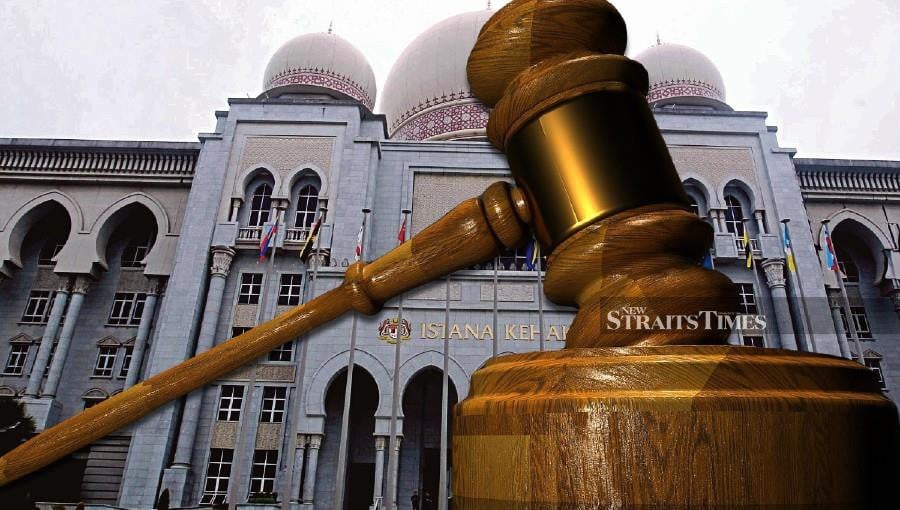With society becoming more litigious these days, our court system has become inundated with civil disputes.
It 2022, there were 519 cases in the Federal Court, 6,307 in the Court of Appeal and in excess of 15,000 in the High Court and subordinate courts.
"It can, therefore, be discerned that there's no recession in the courts," says Datuk Lim Chong Fong, a judge in the Court of Appeal, when he addressed a recent Alternative Dispute Resolution (ADR) seminar.
He says that as our nation matures, ironically this also brings along disputes, be it political, criminal, economic, social or family related. And, they have to be professionally dealt with to avoid chaos in society.
One of the best ways forward is mediation, which forms part of ADR.
The good thing is, there's an increasing number of activists (lawyers included) who feel that they could lighten the burden of our court system by getting more people well-versed in the art and science of mediation.
The Penang-based Advanced Dispute Resolution Centre (ADRC), which comes under the auspices of the Penang Muhibbah Consultative Council (MPMNPP), has taken the lead in this direction.
MPMNPP is an umbrella body of non-governmental organisations promoting much goodwill in the state.
It teamed up with the Graduate School of Business at Universiti Sains Malaysia and the National Unity Department to run professional certificate courses to produce more mediators with the right mettle and knowledge to undertake important ADR tasks.
MPMNPP president Tan Sri Mohd Yusoff Latiff says mediators can help avoid a "winner takes all" situation.
"We want a 'win-win' system, where all parties in a dispute can benefit from the outcome of the resolution process," says Yusoff, who at 93 is an elder statesman of Penang.
"If we don't deal with the root of the problem, more disputes will surface eventually.
"This is not to say that the current judicial system is not good. It's just that the current system is geared towards solving commercial disputes where issues are mostly about monetary compensation," he adds.
Offering another view, Lim, who was a quantity surveyor and construction lawyer before he joined the judiciary, says construction disputes are always aplenty due to the nature of the construction industry and the way it's managed and operated.
The incidence of under or non-payment for work or services is relatively high.
He stresses that ADR is much needed because of the difficulty in resolving construction disputes in the courts. Such cases are often technically complex, factually massive and too time consuming for a judge.
Every disputant wants the issue to be resolved justly, swiftly as well as economically or in lay terms — fair, fast and cheap.
More than 10 years ago, it would have taken at least three years to resolve a construction case in court, which could be financially disastrous for many unpaid contractors and sub-contractors.
But, Lim, who has more than 30 years of experience in the construction and legal fields, says the situation has now improved since the introduction of specialist construction courts in 2013.
The introduction of statutory adjudication via the Construction Industry Payment & Adjudication Act 2012 (CIPAA) — another form of ADR — created an inexpensive and fast 100-working-day procedure that was attractive to unpaid contractors.
The CIPAA adjudication decision is binding and enforceable but not final in that it can be again resolved in arbitration or specialist construction courts.
But, it meant a "pay first and argue later" procedure. Statistics show that statutory adjudication has resolved 75 per cent of the 800 or so construction disputes filed every year.
While mediation will not produce a binding decision unless a settlement is reached, Lim notes that mediation of construction disputes has slowly gained traction under the auspices of the Master Builders Association Malaysia, as well as construction mediations under the purview of the Temporary Measures for Reducing the Impact of Coronavirus Disease Act 2020.
So, what's the prognosis for mediation? Its proponents see tremendous potential in resolving civil, matrimonial, consumer and commercial disputes because of its non-confrontational and "win-win" nature.
It's the swiftest and most economical way because a successful mediated resolution is often a compromise.
The writer is a former Bernama chief executive officer and editor-in-chief
The views expressed in this article are the author's own and do not necessarily reflect those of the New Straits Times






